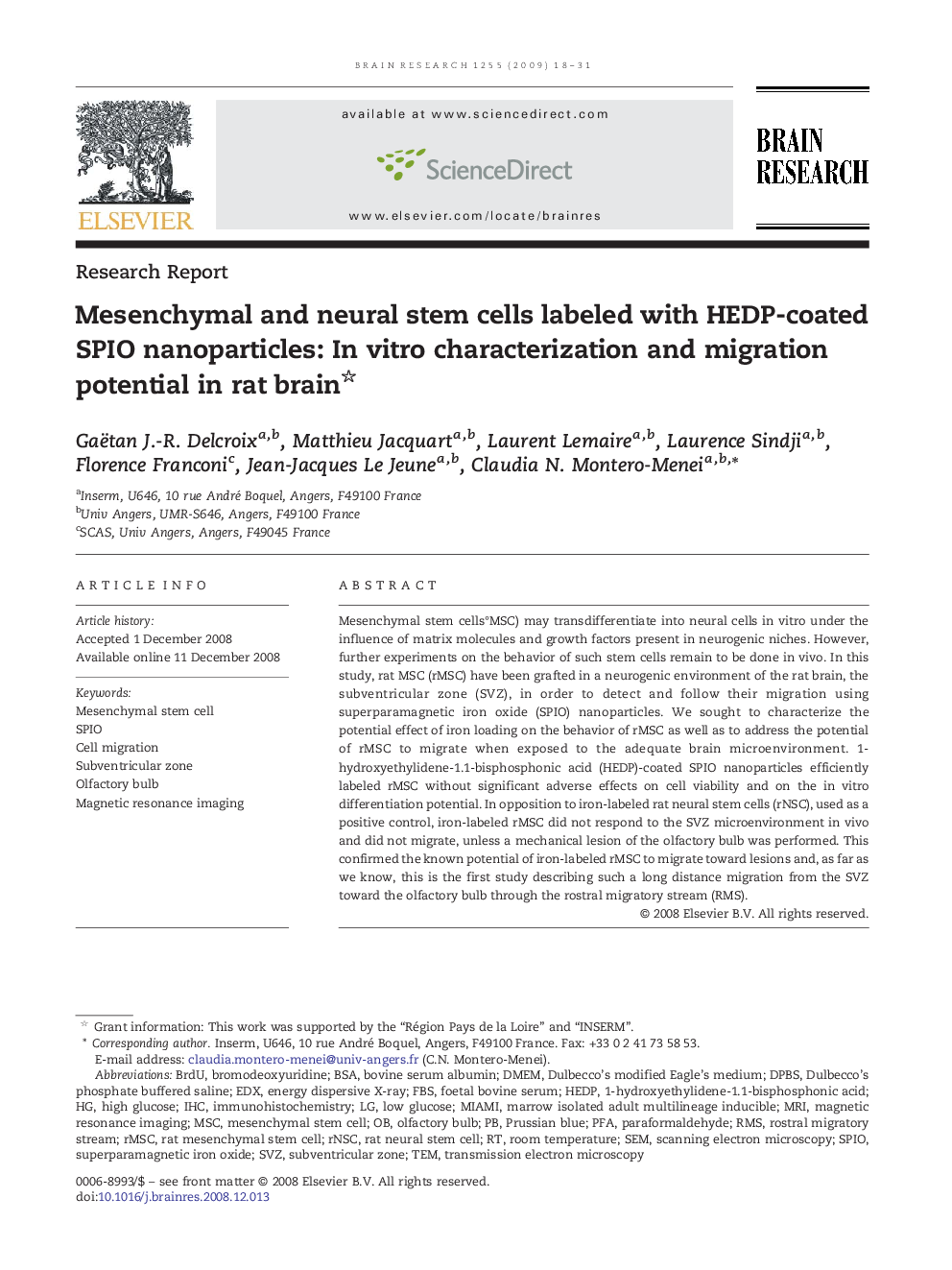| Article ID | Journal | Published Year | Pages | File Type |
|---|---|---|---|---|
| 4328649 | Brain Research | 2009 | 14 Pages |
Mesenchymal stem cells°MSC) may transdifferentiate into neural cells in vitro under the influence of matrix molecules and growth factors present in neurogenic niches. However, further experiments on the behavior of such stem cells remain to be done in vivo. In this study, rat MSC (rMSC) have been grafted in a neurogenic environment of the rat brain, the subventricular zone (SVZ), in order to detect and follow their migration using superparamagnetic iron oxide (SPIO) nanoparticles. We sought to characterize the potential effect of iron loading on the behavior of rMSC as well as to address the potential of rMSC to migrate when exposed to the adequate brain microenvironment. 1-hydroxyethylidene-1.1-bisphosphonic acid (HEDP)-coated SPIO nanoparticles efficiently labeled rMSC without significant adverse effects on cell viability and on the in vitro differentiation potential. In opposition to iron-labeled rat neural stem cells (rNSC), used as a positive control, iron-labeled rMSC did not respond to the SVZ microenvironment in vivo and did not migrate, unless a mechanical lesion of the olfactory bulb was performed. This confirmed the known potential of iron-labeled rMSC to migrate toward lesions and, as far as we know, this is the first study describing such a long distance migration from the SVZ toward the olfactory bulb through the rostral migratory stream (RMS).
